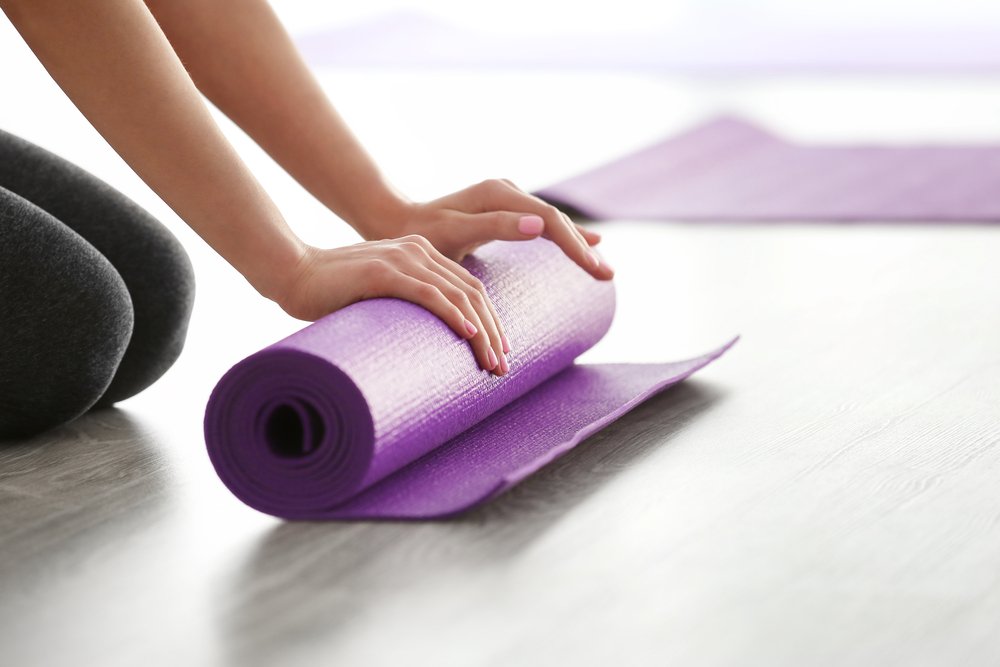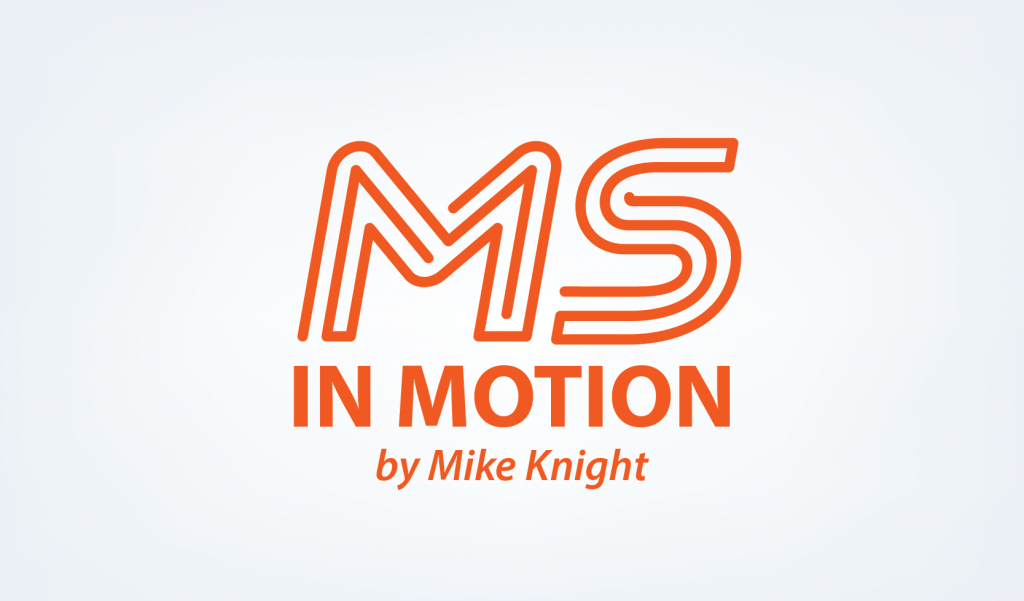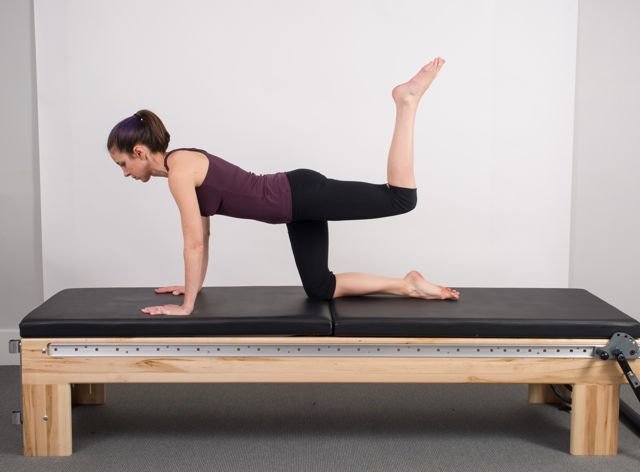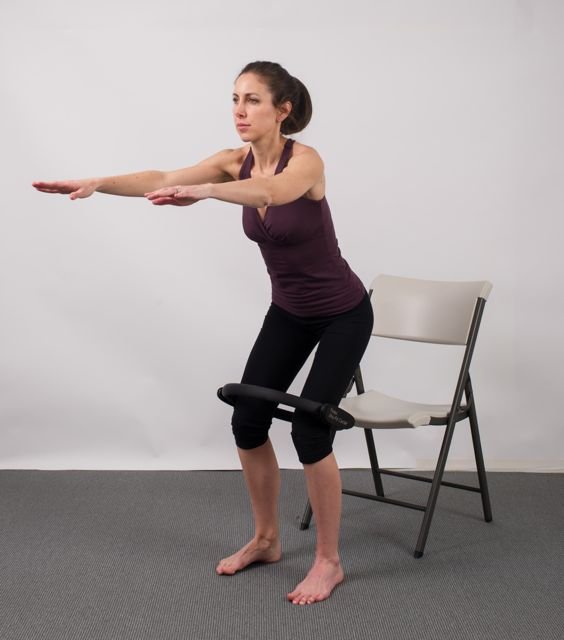How Pilates Changed My Life … and My MS, Part Three: Mariska Breland’s Pilates Tips


Note to readers: This is the last of a three-part series focusing on the valuable role Pilates has played in my life with MS. If you missed the first two, you’ll find them here and here.
This column focuses on exercises and tips from Mariska Breland, a Pilates instructor diagnosed with relapse remitting multiple sclerosis (RRMS) in 2002. She also trains other Pilates instructors to work with MS clients.
Generally, these exercises and tips focus on balance, overhead strength and core strength. As always, make sure to check with your physician before before beginning any new exercise or routine — please!
Breland’s tips
Balance: Breland says “balance” is a combination of physical and neurological assets, including proprioception, vestibular and musculoskeletal ability and function. Unfortunately, all are subject to change because of MS progression.
1. Start by putting your “best” foot forward: Take off your shoes and socks. For those with foot drop (like me), going barefoot is the best way to actually feel the floor. So, take ’em off!
2. Keep your feet loose and mobile: The foot, Breland notes, has 33 joints, 26 bones and more than 100 muscles, ligaments and tendons. Our feet need to be very, very mobile, and using a tennis ball (or one of similar size), roll your foot over the ball in every direction, and side to side with enough pressure that you can see your toes spread out. Ideally you can curl and spread your toes with space between each toe. (It’s OK to use a toe spreader for help).

Mariska Breland does a leg lift to improve balance. (Photo courtesy of Mariska Breland)
3. Proprioceptive balance: Stand barefoot and try to lift up one leg. Hold for 10 to 30 seconds. Repeat on the other side. To make it harder, hold your leg up and move it in and out, or forward and back.
4. Vestibular balance: The vestibular system responds well to head and eye turns, Breland says. Stand in a lunge and turn your head to the right, and then to the left. Look up and down. Repeat for 30 seconds. Make sure to hold onto something if you feel unsteady; your balance should improve over time.

Mariska Breland demonstrates a hip stability exercise. (Photo courtesy of Mariska Breland).
5. Hip stability: Come to a quadruped position (hands and knees, with hands under shoulders and knees under hips). Extend a leg back, but keep both hips on the same level. The inclination will be to dip into the leg that is on the floor; this indicates weakness in the hip stabilizers on that side. Hold for up to one minute. Switch sides.

Mariska Breland demonstrates a squat using the Magic Circle. (Photo courtesy of Mariska Breland)
6. Quadricep eccentric strength (stand to sit squat): Anyone who has struggled to get out of a chair knows that sometimes momentum is not a friend. Breland says it’s a frequent cause of falling, and hip instability or quad weakness can cause it to happen. To practice this exercise and get stronger, keep your legs hip-distance apart and slowly bend your knees, lowering yourself to a seat on a count of three to five. To progress through the exercise, choose a high seat to start and systematically move on to lower surfaces. (Make sure the chair isn’t going to move.)
Overhead strength
Getting something out of an overhead cupboard requires overhead, core and back strength to support the process and maintain balance. A “big problem with overhead strength is actually shoulder and upper-back mobility,” Breland says. Try these to shore up your shoulders.
1. The “hanging cat” stretch” for mid-back muscles: Come to a kneeling position and rest your arms on a chair. Drop your chest between your arms and press your arms actively into the chair. Now (this is important) tuck your hips and round your back while your arms are extended. You’ll actually feel the stretch more in your lats and mid-back.
2. The big circle shoulder stretch: Do a really huge arm circle using a light weight (no more than five pounds). Shrug your shoulders up by your ears as you lift your arm high. It’s easiest to do this with your shoulder against the wall so you can make sure your circle is as big as possible. Do five repetitions in each direction.
Core Strength
Breland thinks of the core as the combination of abdominals and lower back. A stronger core leads to better balance and fewer falls.
1. Hollow body hold (for the front of the body): Lying on the floor, lift your head and chest and pull your feet into your hips, hovering them off the floor. Try to keep your low back on the floor. Work up to holding this for one minute. It’s harder than it looks!
2. Superman (for the back of the body): Lie down on your stomach and extend your arms and legs. Lift your arms, legs, head (and chest if possible). Hold for up to one minute. Don’t forget to breathe!
Please note: When I began this series, I hoped I could combine these exercises along with the $100 home gym in one column, but it’s too much content. Normally, my columns publish every two weeks, but look for the home gym column one week from today. Sorry for the miscalculation!
***
Note: Multiple Sclerosis News Today is strictly a news and information website about the disease. It does not provide medical advice, diagnosis, or treatment. This content is not intended to be a substitute for professional medical advice, diagnosis, or treatment. Always seek the advice of your physician or other qualified health provider with any questions you may have regarding a medical condition. Never disregard professional medical advice or delay in seeking it because of something you have read on this website. The opinions expressed in this column are not those of Multiple Sclerosis News Today, or its parent company, Bionews Services, and are intended to spark discussion about issues pertaining to multiple sclerosis.







Leave a comment
Fill in the required fields to post. Your email address will not be published.